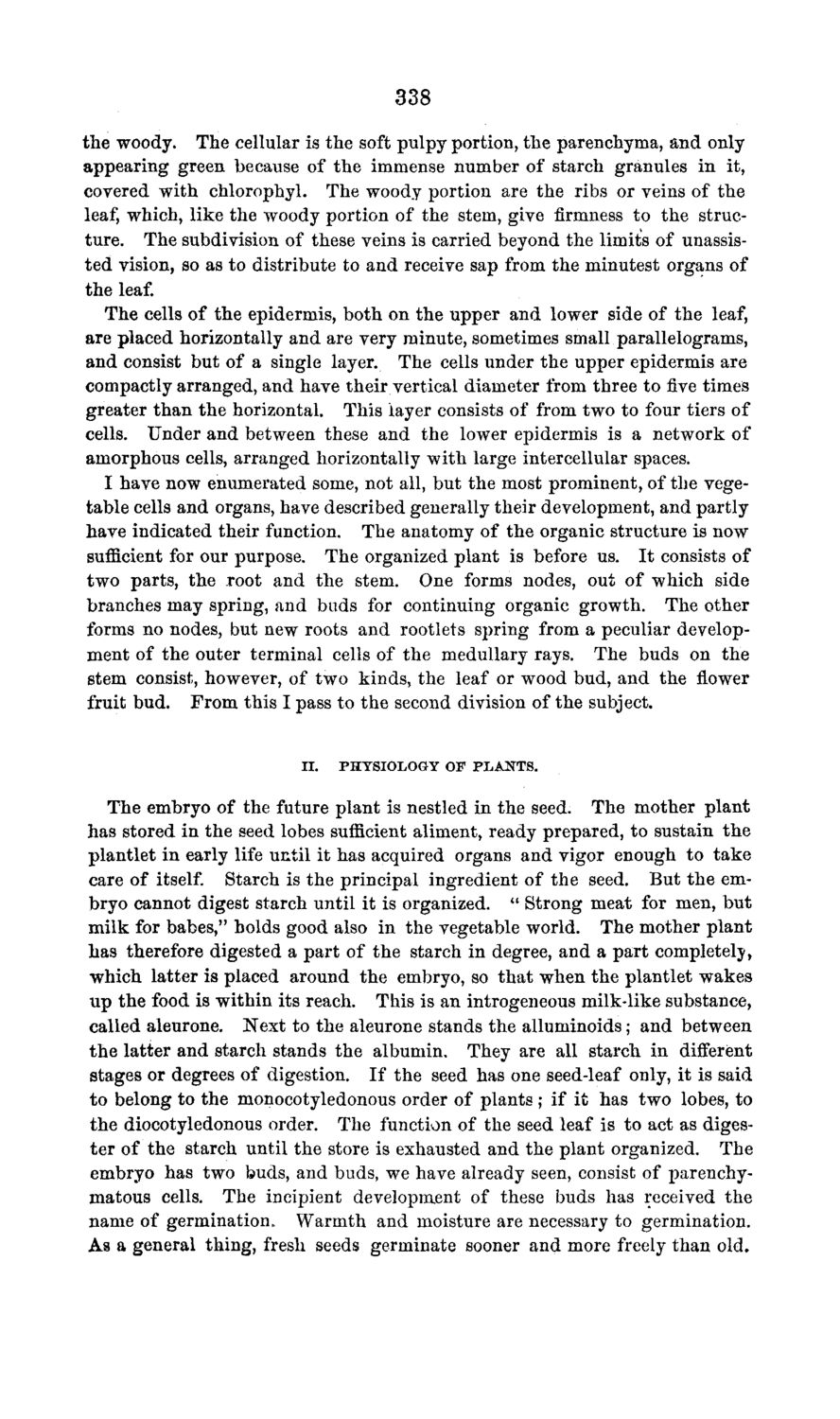| |
| |
Caption: Board of Trustees Minutes - 1869
This is a reduced-resolution page image for fast online browsing.

EXTRACTED TEXT FROM PAGE:
338 the woody. The cellular is the soft pulpy portion, the parenchyma, and only appearing green because of the immense number of starch granules in it, covered with chlorophyl. The woody portion are the ribs or veins of the leaf, which, like the woody portion of the stem, give firmness to the structure. The subdivision of these veins is carried beyond the limits of unassisted vision, so as to distribute to and receive sap from the minutest organs of the leaf. The cells of the epidermis, both on the upper and lower side of the leaf, are placed horizontally and are very minute, sometimes small parallelograms, and consist but of a single layer. The cells under the upper epidermis are compactly arranged, and have their vertical diameter from three to five times greater than the horizontal. This layer consists of from two to four tiers of cells. Under and between these and the lower epidermis is a network of amorphous cells, arranged horizontally with large intercellular spaces. I have now enumerated some, not all, but the most prominent, of the vegetable cells and organs, have described generally their development, and partly have indicated their function. The anatomy of the organic structure is now sufficient for our purpose. The organized plant is before us. It consists of two parts, the root and the stem. One forms nodes, out of which side branches may spring, and buds for continuing organic growth. The other forms no nodes, but new roots and rootlets spring from a peculiar development of the outer terminal cells of the medullary rays. The buds on the stem consist, however, of two kinds, the leaf or wood bud, and the flower fruit bud. From this I pass to the second division of the subject. II. PHYSIOLOGY O F P L A N T S . The embryo of the future plant is nestled in the seed. The mother plant has stored in the seed lobes sufficient aliment, ready prepared, to sustain the plantlet in early life until it has acquired organs and vigor enough to take care of itself. Starch is the principal ingredient of the seed. But the embryo cannot digest starch until it is organized. " Strong meat for men, but milk for babes," holds good also in the vegetable world. The mother plant has therefore digested a part of the starch in degree, and a part completely, which latter is placed around the embryo, so that when the plantlet wakes up the food is within its reach. This is an introgeneous milk-like substance, called aleurone. Next to the aleurone stands the alluminoids; and between the latter and starch stands the albumin. They are all starch in different stages or degrees of digestion. If the seed has one seed-leaf only, it is said to belong to the monocotyledonous order of plants ; if it has two lobes, to the diocotyledonous order. The function of the seed leaf is to act as digester of the starch until the store is exhausted and the plant organized. The embryo has two buds, and buds, we have already seen, consist of parenchymatous cells. The incipient development of these buds has received the name of germination. Warmth and moisture are necessary to germination. As a general thing, fresh seeds germinate sooner and more freely than old.
| |